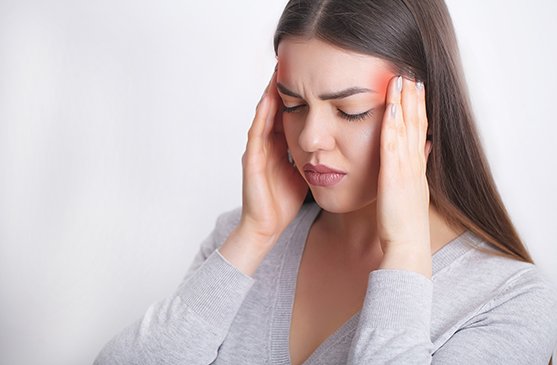A migraine can cause severe throbbing pain or a pulsing sensation, generally on just one side of the head. Nausea, vomiting, and extreme sensitivity to light and sound may be felt along with it.
02 4950 1333
The common failure in migraine conventional treatment globally and its response to low-level laser therapy, also called cold laser, is well appreciated in science. It has an enormous effect on reducing pain and improving the quality of life by stimulating the nervous system in favor of human body (acupuncture) and improving the circulation in local tissues (laser therapy). It also releases the spasms of the tight muscles like a release of trigger points. The anti-inflammatory effect produced by laser therapy also provides the site of pain, an opportunity to repair tissue, and thus improve mobility.


A migraine can cause severe throbbing pain or a pulsing sensation, generally on just one side of the head. Nausea, vomiting, and extreme sensitivity to light and sound may be felt along with it.
Migraine attacks can lead to significant pain for hours to days. The pain may be very severe and can restrict your daily activities.
Warning symptoms called aura may occur before or along with a headache. These can be flashes of light, blind spots, or tingling on one side of the face or in the arm or leg.
Some migraines can be prevented and be made less painful with the help of medications. Discuss the different options for treatment with a doctor if you do not find relief. The right medicines, coupled with self-help remedies and changes in lifestyle may prove helpful.
Migraines often begin during childhood, adolescence or early adulthood. Migraines may advance through four stages: prodrome, aura, headache, and post-drome, however, you may not experience all stages.
One or two days prior to a migraine, you may notice mild changes that indicate an upcoming migraine, including:
The aura may occur prior to or during migraines. However, most people experience migraines without aura.
Auras are symptoms that involve the nervous system. They are usually visual disturbances, like flashes of light or vision that is wavy, zigzag.
At times auras can also be touching sensations or sensory, movement or motor or speech or verbal disturbances. Your muscles may become weak, or you may have a feeling as though someone is touching you.
Each of these symptoms generally starts slowly, builds up over several minutes and persists for 20 to 60 minutes. Examples of migraine aura are:
A migraine usually lasts from four to 72 hours if not treated. The frequency with of occurrence of headaches differs from person to person. Migraines may be uncommon or strike several times a month. During a migraine, you may experience:
The final phase occurs after a migraine attack. It is known as the post-drome. During this phase, some people may feel drained and washed out, while some may feel elated. For about 24 hours, one may also have a feeling of:
A number of factors may trigger migraines, including:
Many factors make you more prone to having migraines, including:

Take advantage of our affordable laser pain management services today!
Even though the causes of migraine causes are still unknown, hereditary and environmental factors seem to have a hand in it. Migraines may be caused by alterations in the brainstem and the way it interacts with the trigeminal nerve, which is a major pathway of pain. Imbalances in brain chemicals including serotonin, which helps in the regulation of pain in the nervous system may also be responsible. Researchers are still studying the role played by serotonin in migraines. Levels of serotonin drop during migraine attacks. This may cause your trigeminal nerve to release substances known as neuropeptides, which travel to your brain’s outer covering also known as the meninges. As a result, one may experience migraine pain.
Migraines are often not diagnosed and not treated. If you have regular signs and symptoms of migraine attacks, maintain a record of the attacks and how you treated them. You can then consult your doctor and discuss your headaches. Even if you have regular headaches, consult a doctor if the pattern changes or the headaches suddenly feel dissimilar. Consult your doctor right away or go to the emergency room if you experience any of the following signs and symptoms, as these may be indications of a more severe medical problem: